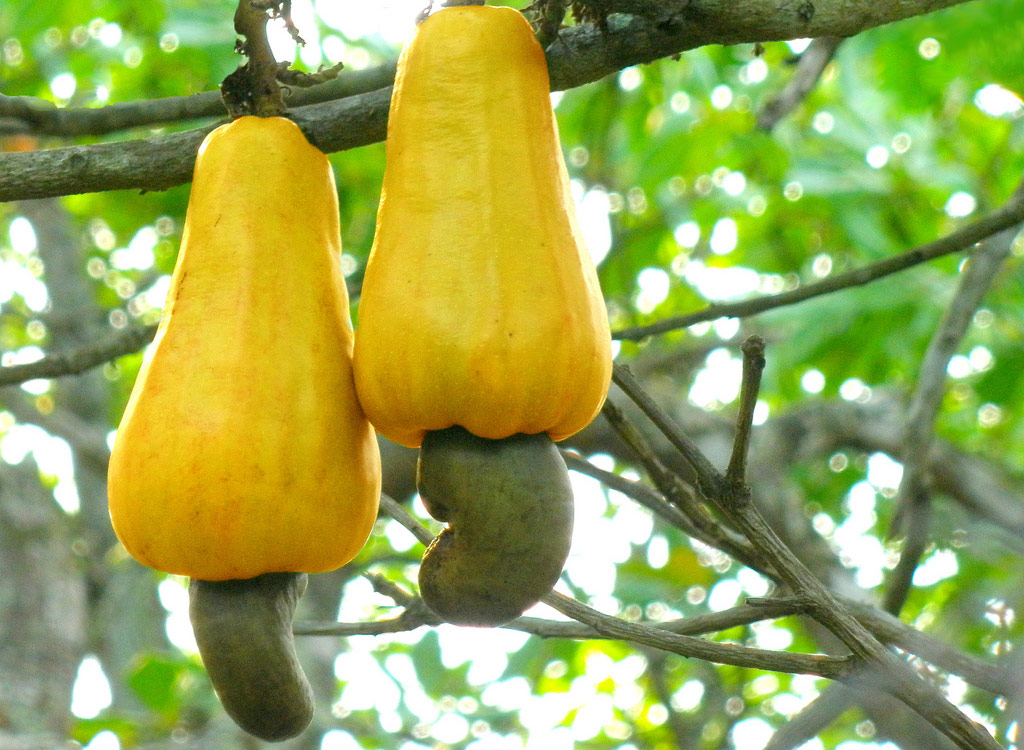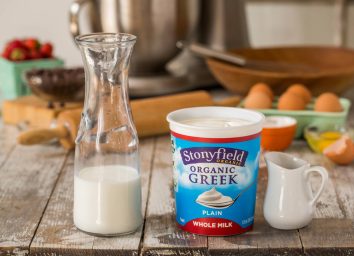What All Your Favorite Produce Looks Like as it Grows
We all know the basic apples to oranges, but did you know that bananas grow upside down? How nuts look as they grow, from cashews to peanuts—which aren’t even really a nut by the way—will leave you even more shocked. We eat produce every day but rarely stop to think what it looks like before it hits our dinner plate. If you are curious as we are to find out now, wonder no more!
And if you want healthy recipes, supermarket shopping guides, and essential nutrition tips at your fingertips subscribe to the new Eat This, Not That! magazine now! For a limited time, you can save 50 percent off the cover price—click here!
Cashew
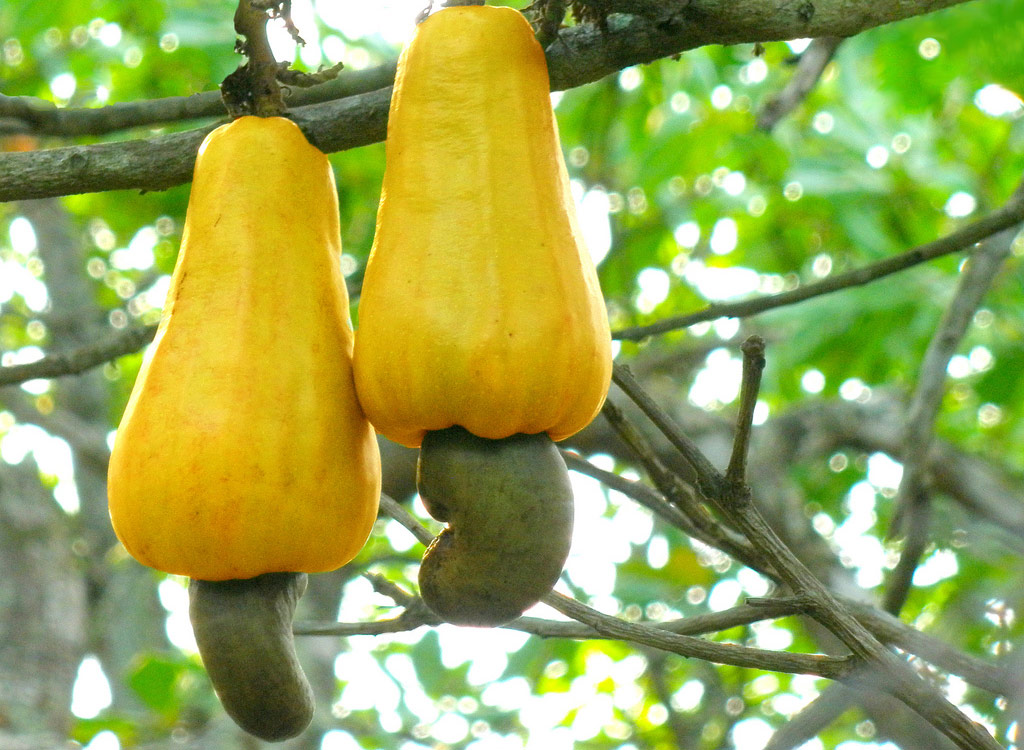
This one could change the way you look at cashews forever. The bitter and runny (not to mention ugly looking) fruit that the nut grows from is called a cashew fruit, and it is used in jams and juices. To harvest the cashew the entire fruit is picked from the tree and the nut is extracted from the hard shell through a tedious process of hand steaming, freezing, and boiling.
Bananas
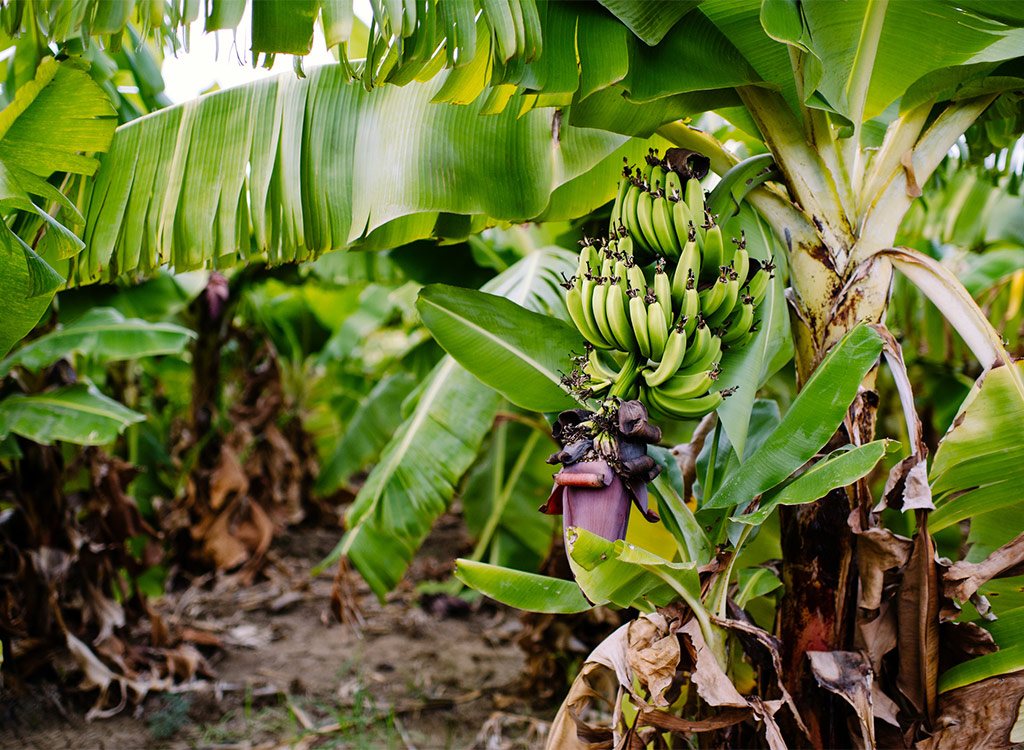
Although they are often called banana palms, bananas aren’t really grown on trees at all. They’re actually large arborescent (tree-like) herbs. They grow a large purple flower, and as the petals drop, banana bunches are revealed underneath. What’s also curious is that even though we typically hold a banana with the stem up, that stem is actually on the bottom end of the banana flower!
Dates
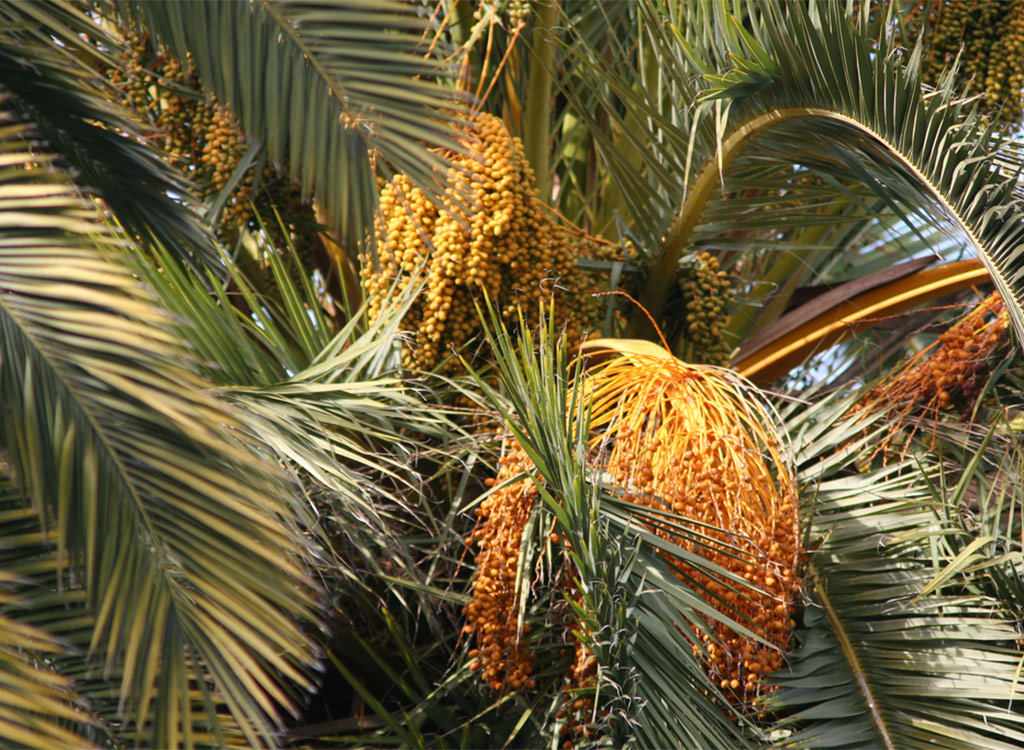
Move over coconut trees—hello date palms. These palm trees grow up to 75 feet tall and favor scorching temperatures often above 100 degrees, making dates some of the most laborious fruits to pick!
Pineapple
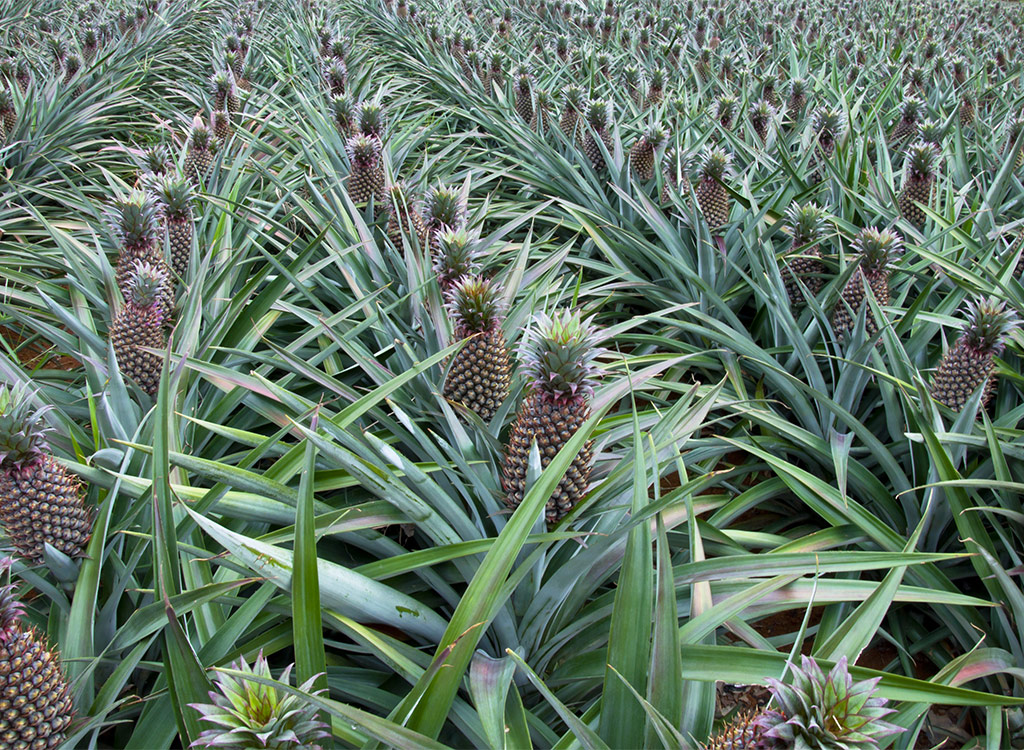
Now we all knew they didn’t grow under the sea—sorry SpongeBob fans—but did anyone else think they grew on a tree? And there’s only one pineapple per plant! They actually grow in the middle of a plant in a pineapple field, which like the fruit itself, are pretty cool looking.
Hass Avocados
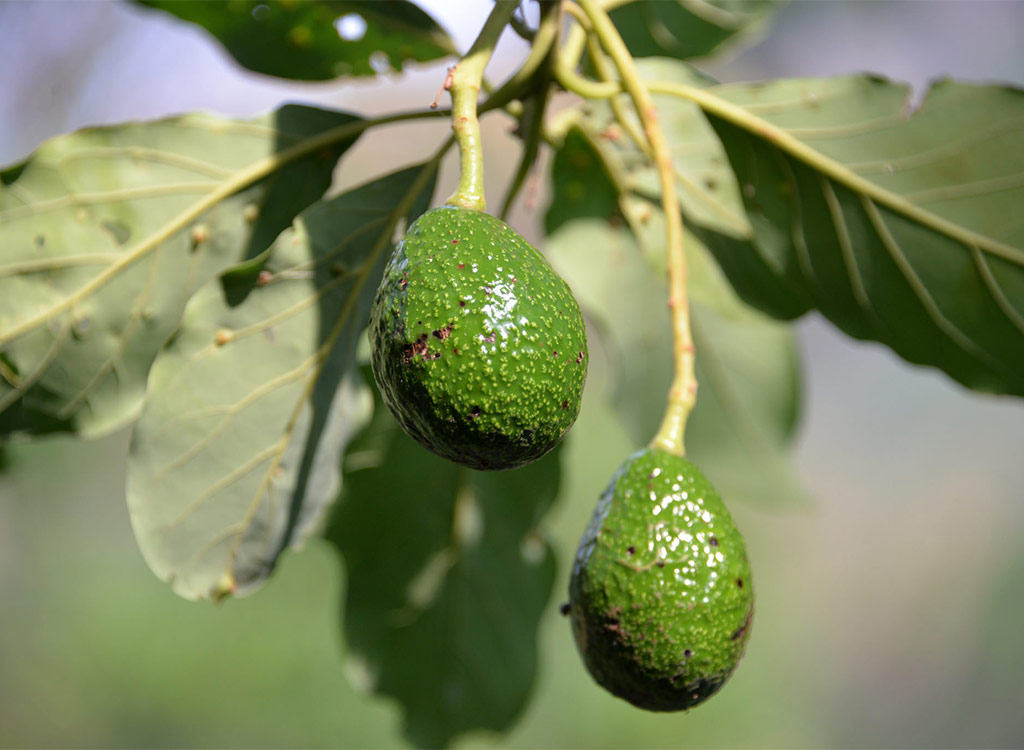
Like most great things, avocados don’t come easy. Growing on a 15 to 30 feet tall tree, special poles must be used to remove the fruit (yes, fruit) from the tall branches—and if they aren’t caught and touch the ground on their way down they are as good as guacamole.
Artichoke
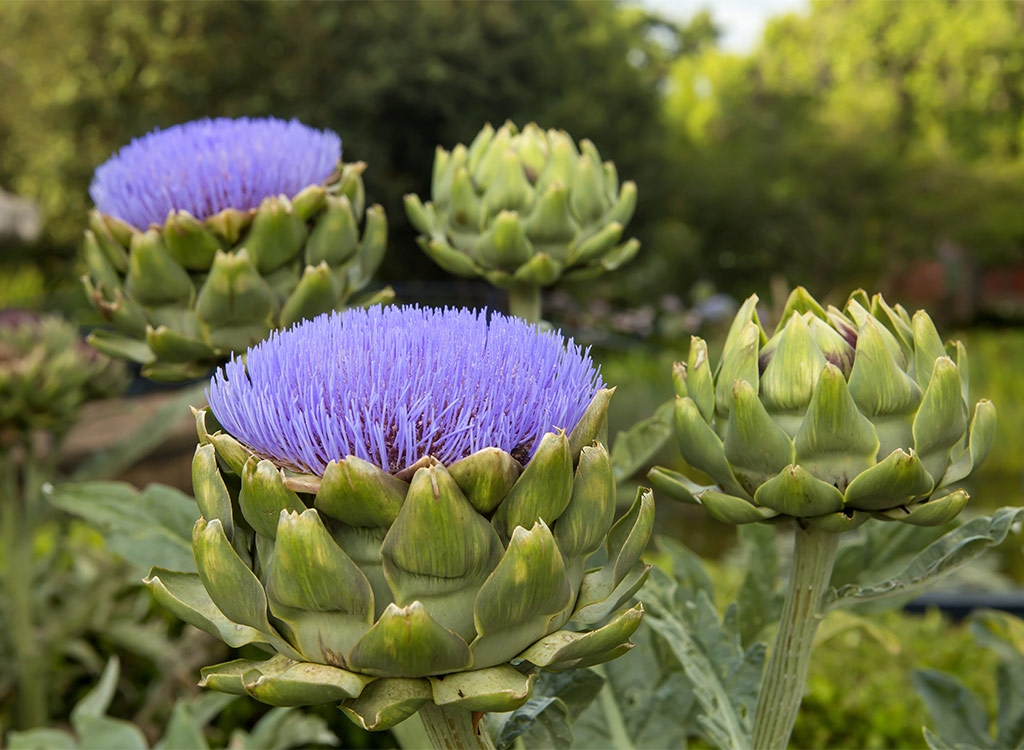
Did you know that when you eat an artichoke you are actually eating an immature flower bud? Artichokes are rendered inedible once they bloom, but they do turn into these beautiful bright blue and purple blossoms.
Asparagus
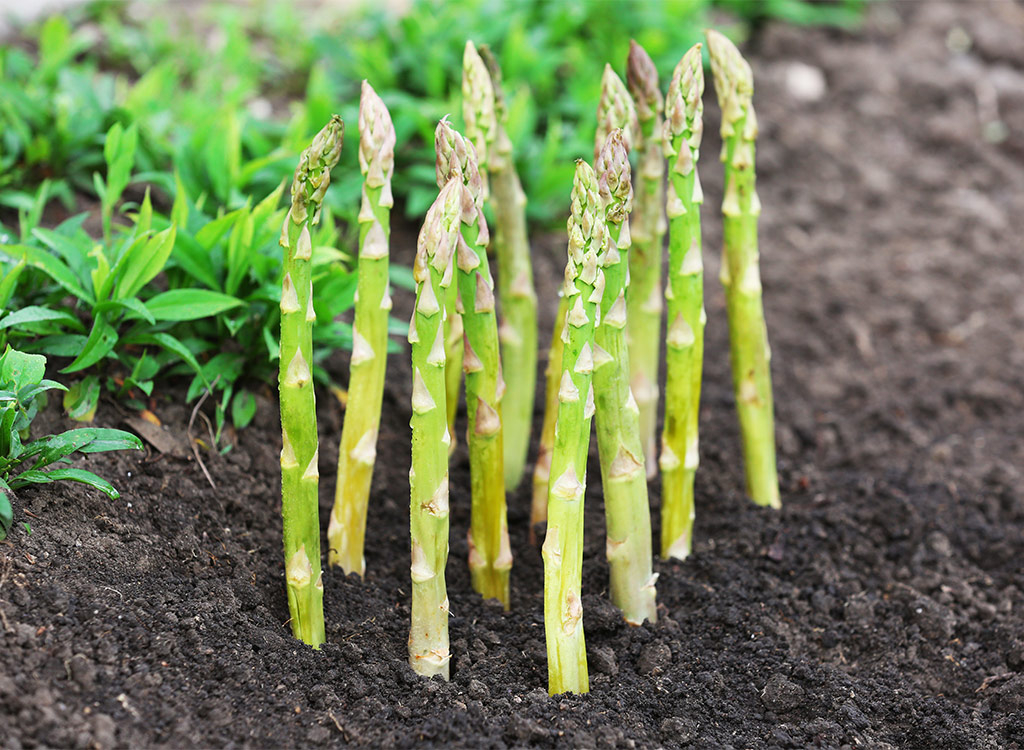
Asparagus spears are some of the first produce to appear when they pop straight through the ground in early Spring. They grow individually, pretty weird looking, isn’t it?
Brussel Sprouts
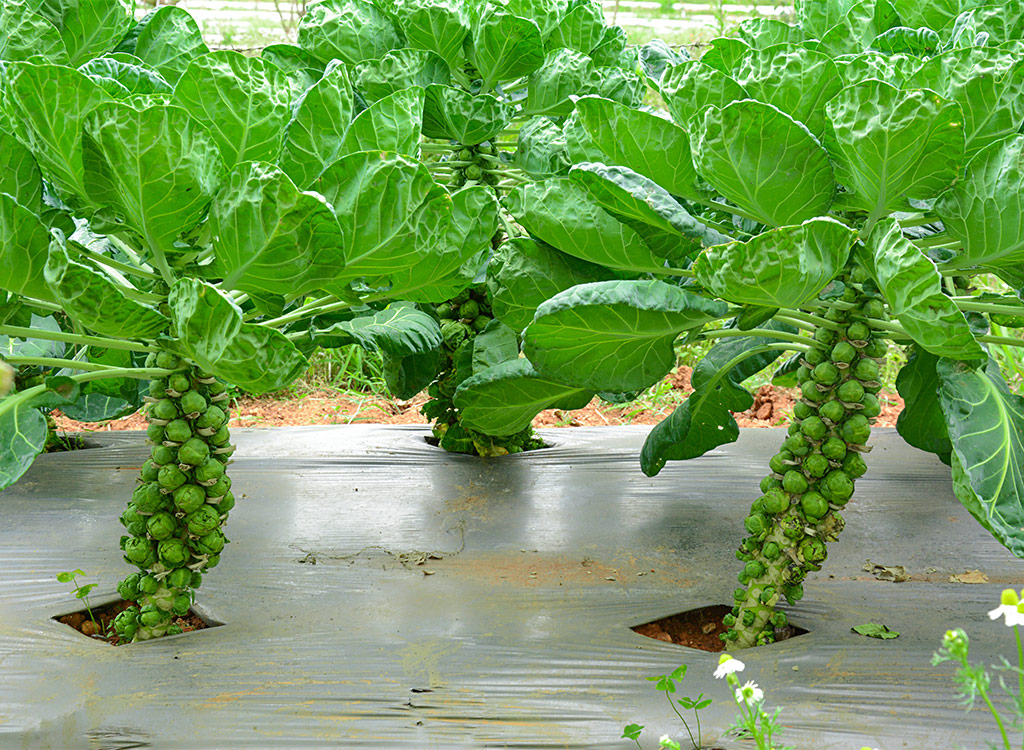
Known for their spot among the most unfavorable options at every Christmas dinner, this member of the cabbage family is actually a great source of protein and vitamins. Also one of the toughest plants in the bunch, Brussel sprouts are cold weather vegetables that can survive even the most bitter harvesting conditions and even become sweeter when they grow through a frost. The part that we eat is actually just a small edible bud on a large, and pretty crazy looking, stalk.
Pomegranate
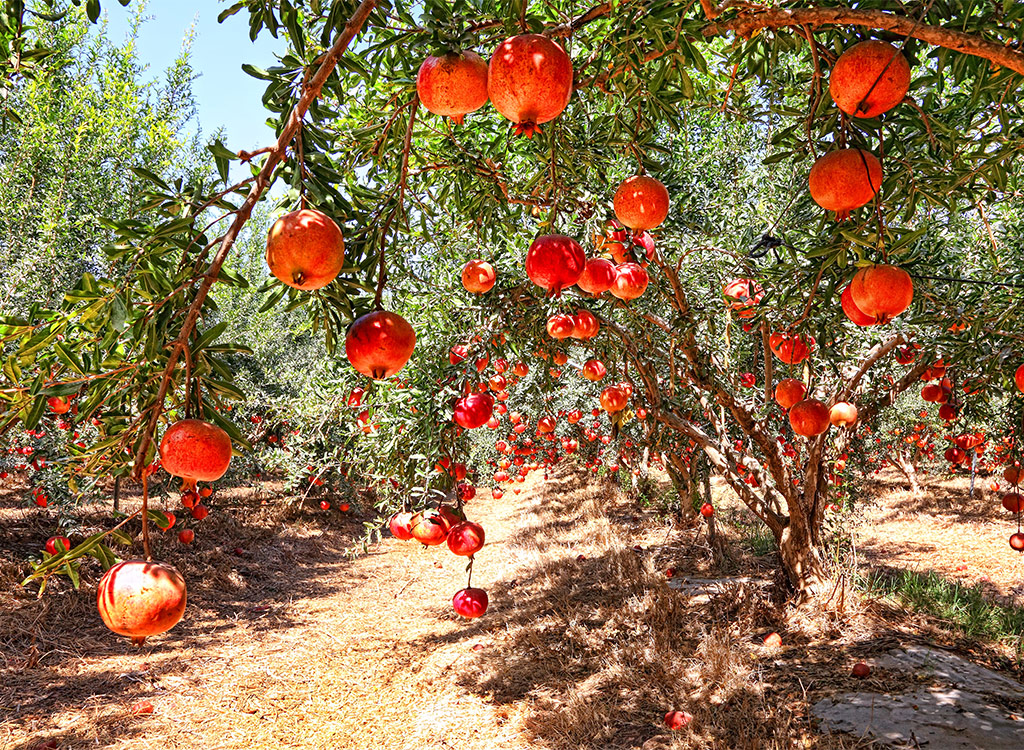
Unlike most other plants, pomegranate trees actually flourish with minimal water. Too much water from over-irrigation or heavy rain has been known to decrease fruit harvest and cause the skins of the fruits to crack.
Quinoa
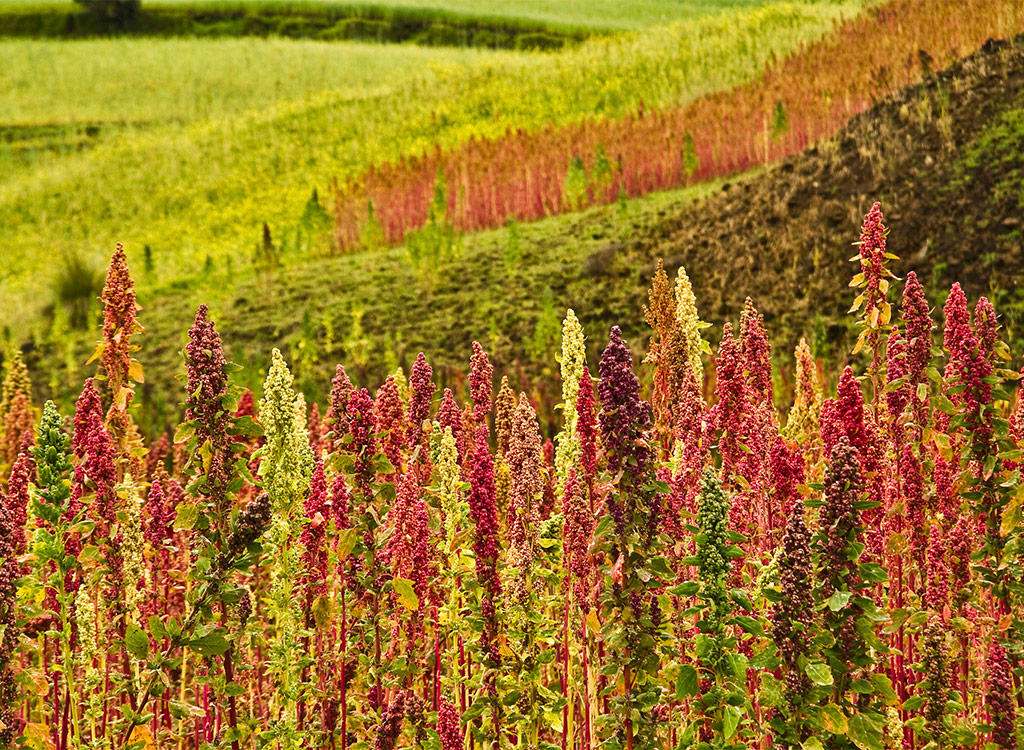
This protein-packed favorite is not actually a grain like most think, but a seed. Quinoa plants have to flower before you can get their seeds, and the result is pretty beautiful. Also, if you plant quinoa on your own you can eat the leaves of the plant—your entire salad is complete from leaf to grain!
Cherries
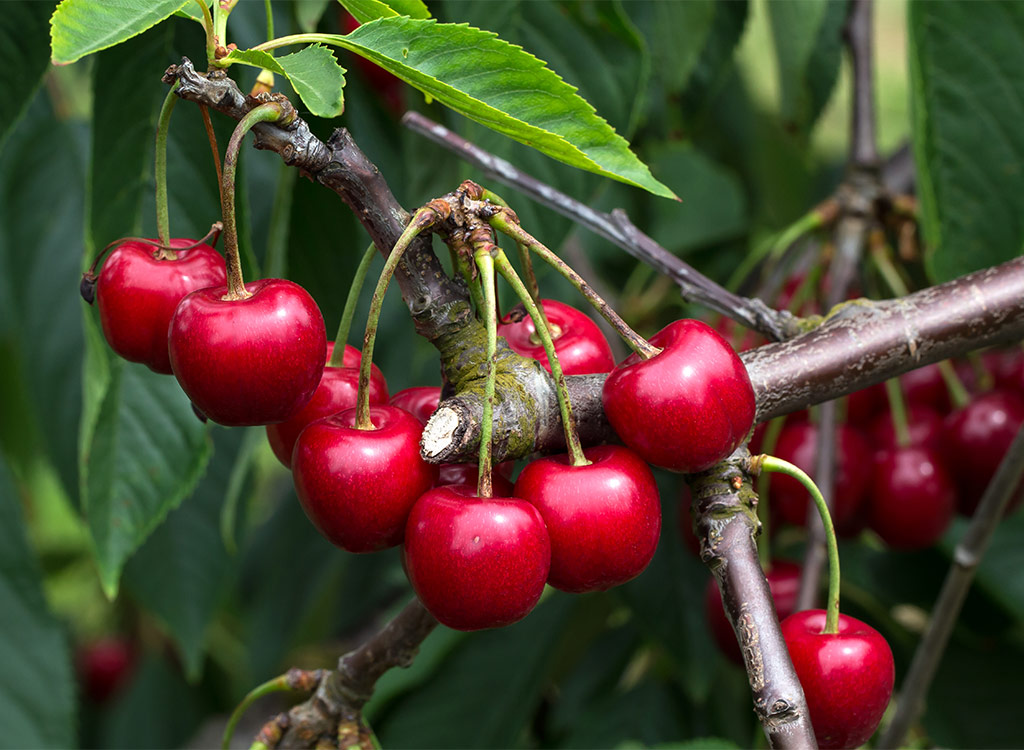
Cherry trees need cold to grow, so tropical regions are not the place to look if these are one of your favorite fruits. They are also an insect and bird favorite, causing some farmers to go as far as playing audio of predatory birds to ward away the pests.
Cocoa
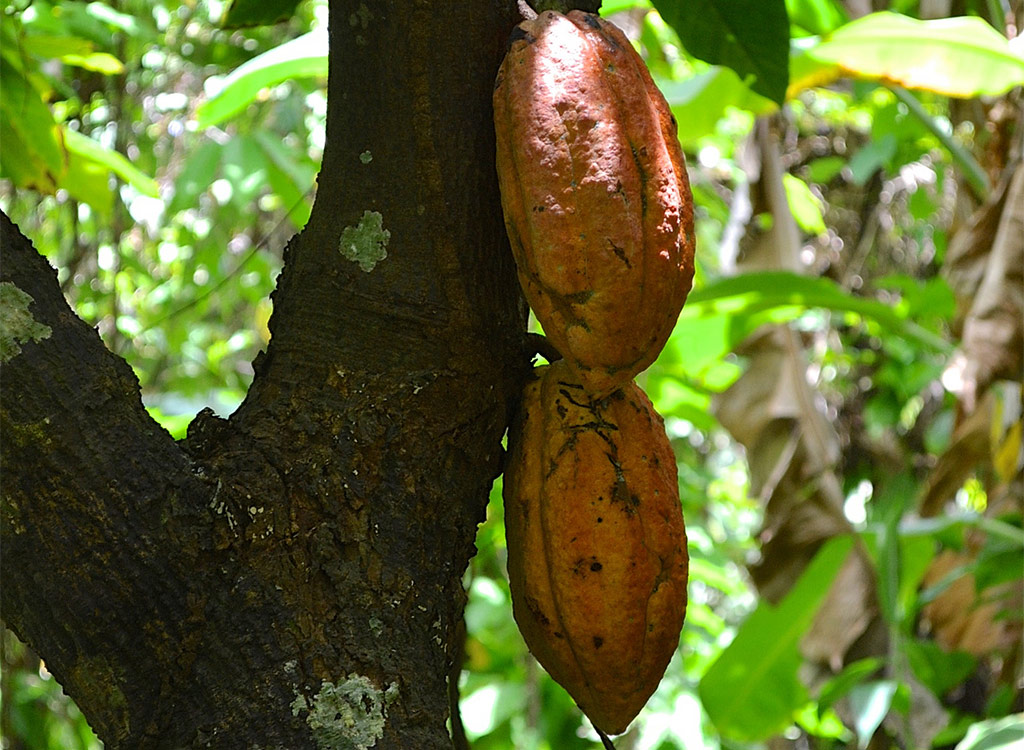
The coveted cocoa bean is found inside these multicolored pods on the cocoa trees of South America. The color of the pod, whether red, yellow, or green, impacts the flavor of the bean inside and what it will be utilized for. A typical tree harvests about 30 pods and each pod holds an average of 30-40 beans so to make just one pound of cocoa, 400 beans are used! And speaking of chocolate…check this out to find out what happens to your body when you indulge in your favorite bar!
Cranberries
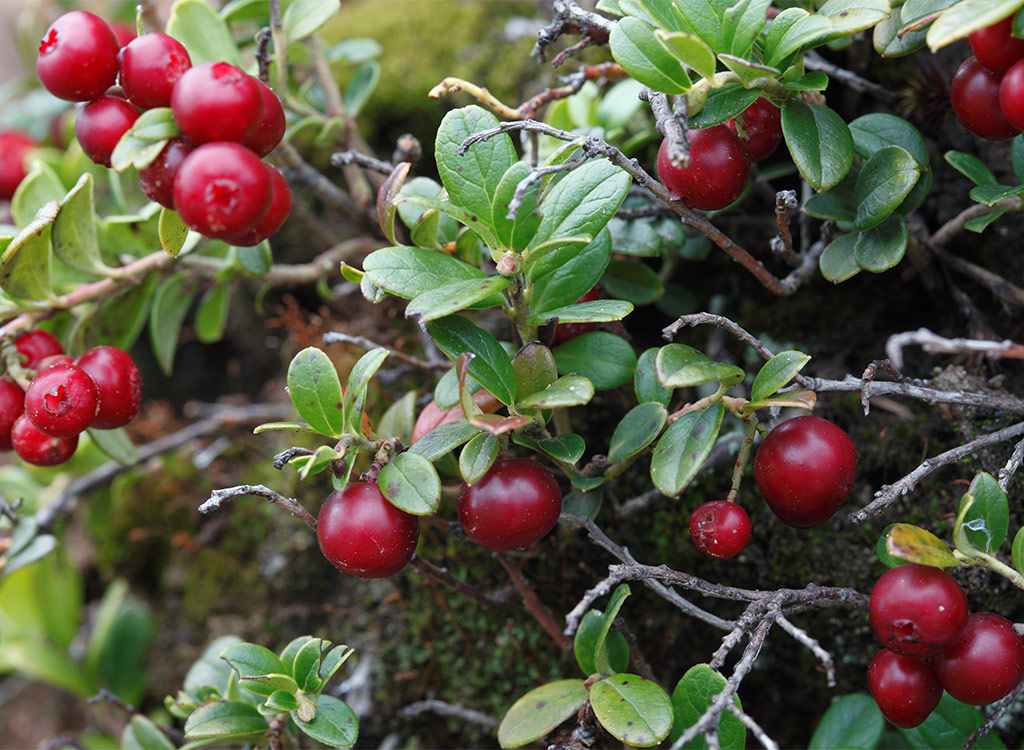
Okay, we may have the Ocean Spray Cran Juice commercials to thank for knowing a little about this one. As a result of the cran-man and his galoshes though, many people think that cranberries grow underwater, which is not the case. What you see when cranberries are floating on top of the water is a process called wet harvesting, in which the bog is filled the night before harvesting with water. The water is churned by reels to loosen the floating berries from the vines and lift them to the surface for easier collection.
Blueberries
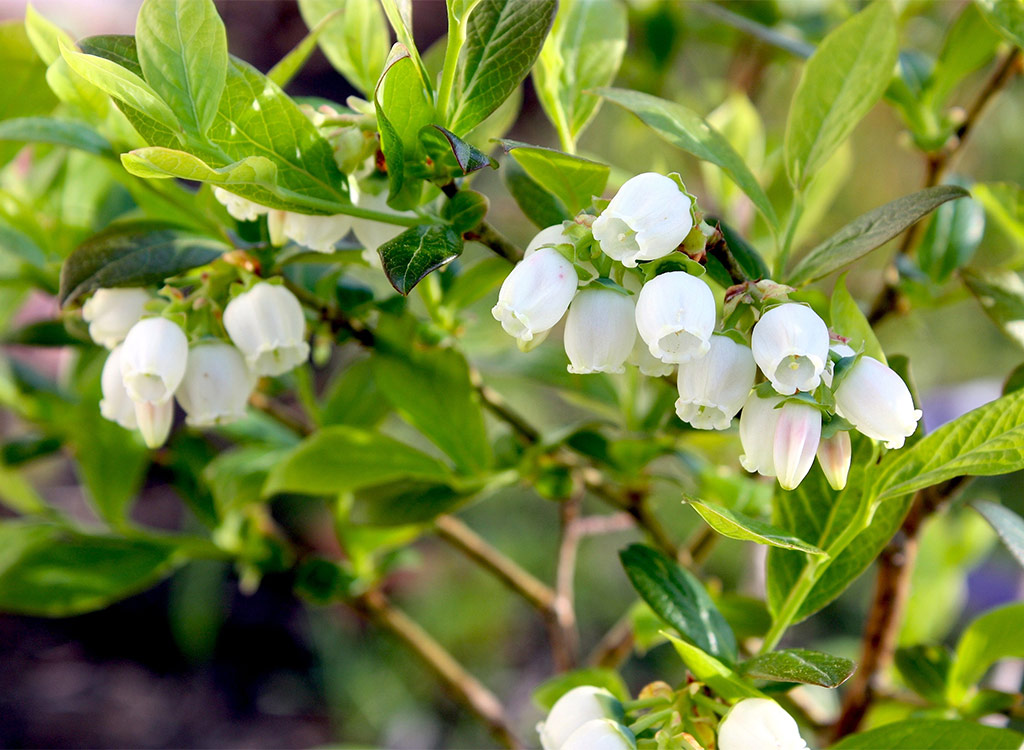
Grown on bushes that can reach as tall as 12 feet, blueberries begin as small white blossoms before becoming hard and green, then a reddish-purple, and finally their signature blue.
Arugula
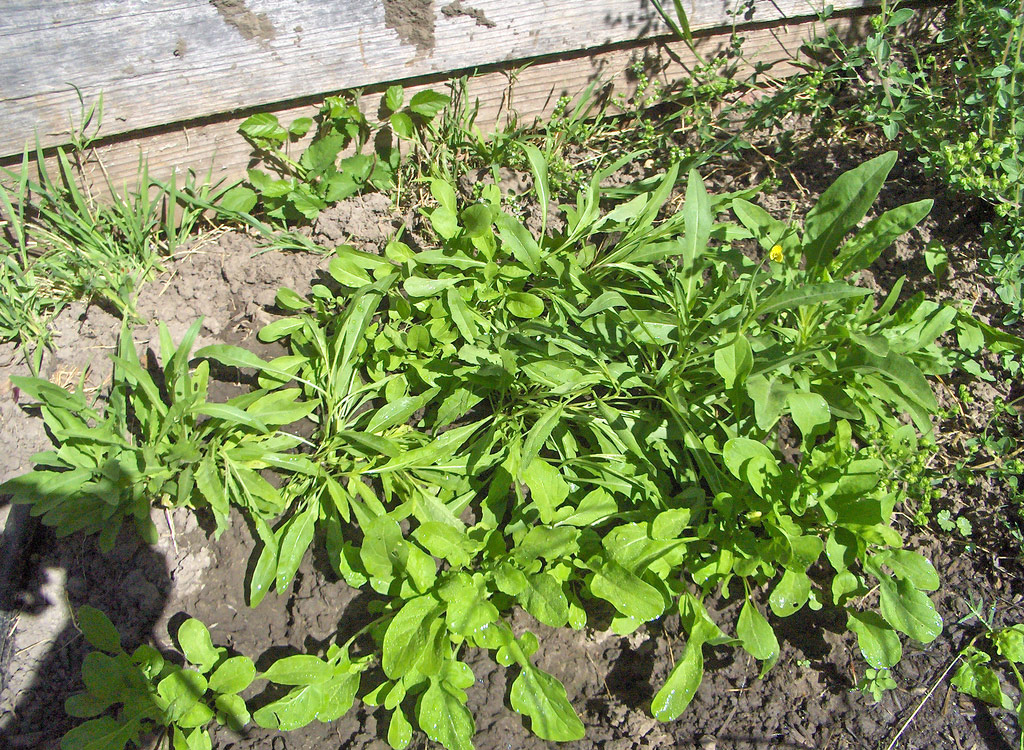
If we didn’t know any better, we may have mistaken this fancy salad component for some weeds in our backyard—and while we are talking about salads, here are 19 you should avoid at all costs if you want to keep your waistline.
Strawberries
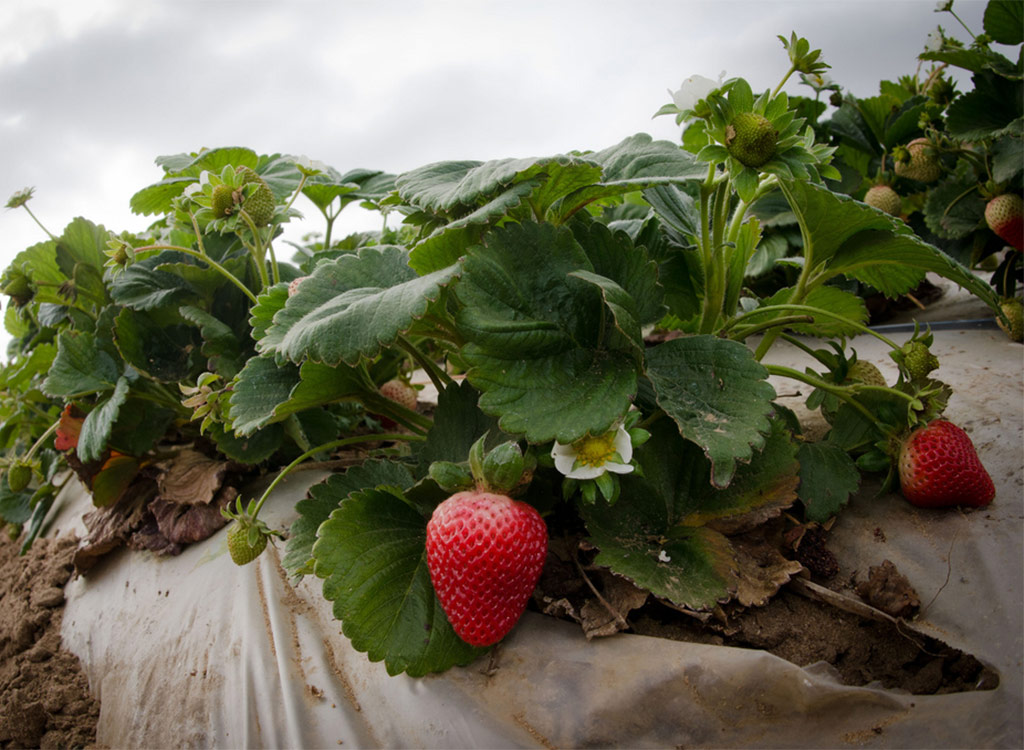
Pick your owns for strawberries are just coming to a close as the month of June wraps up. If you are going picking for the cute photo ops though, you may run into some trouble with strawberries unless you want pictures laying on the ground. A natural strawberry plant typically does not grow past 10-12 inches in height, making it a pretty teeny plant.
Peanut
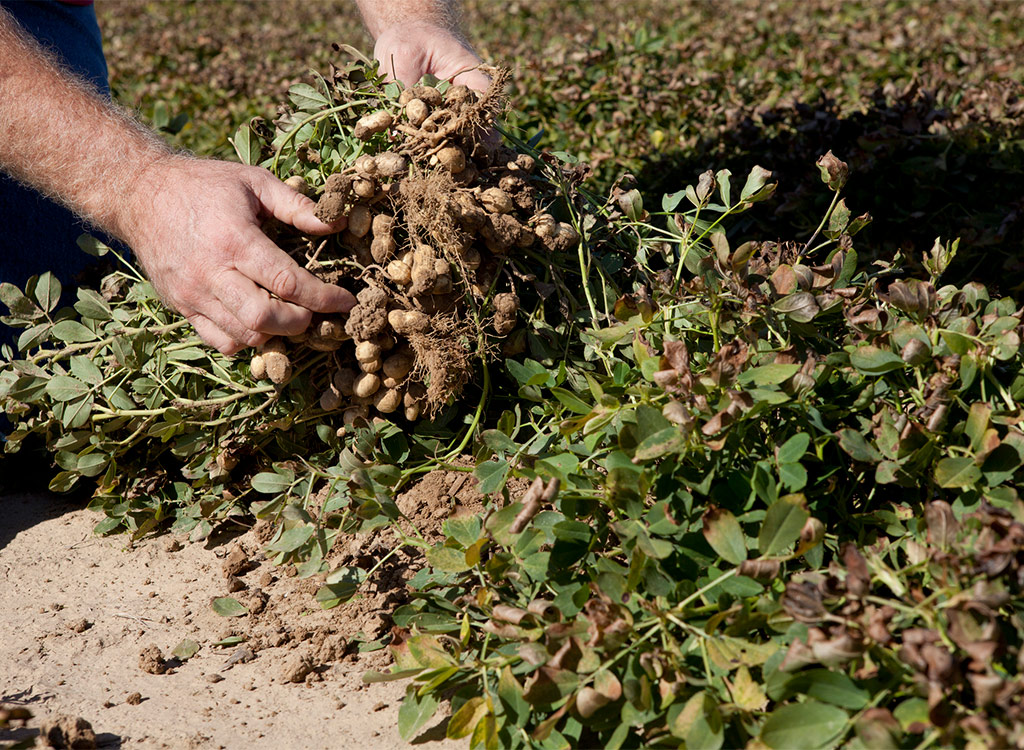
Peanuts are unique because although their plant flowers above ground, it fruits below. Another weird thing you never knew about peanuts is that because they are comprised of edible seeds inside a pod, they are not actually a nut but a legume, like peas or lentils.
Almonds
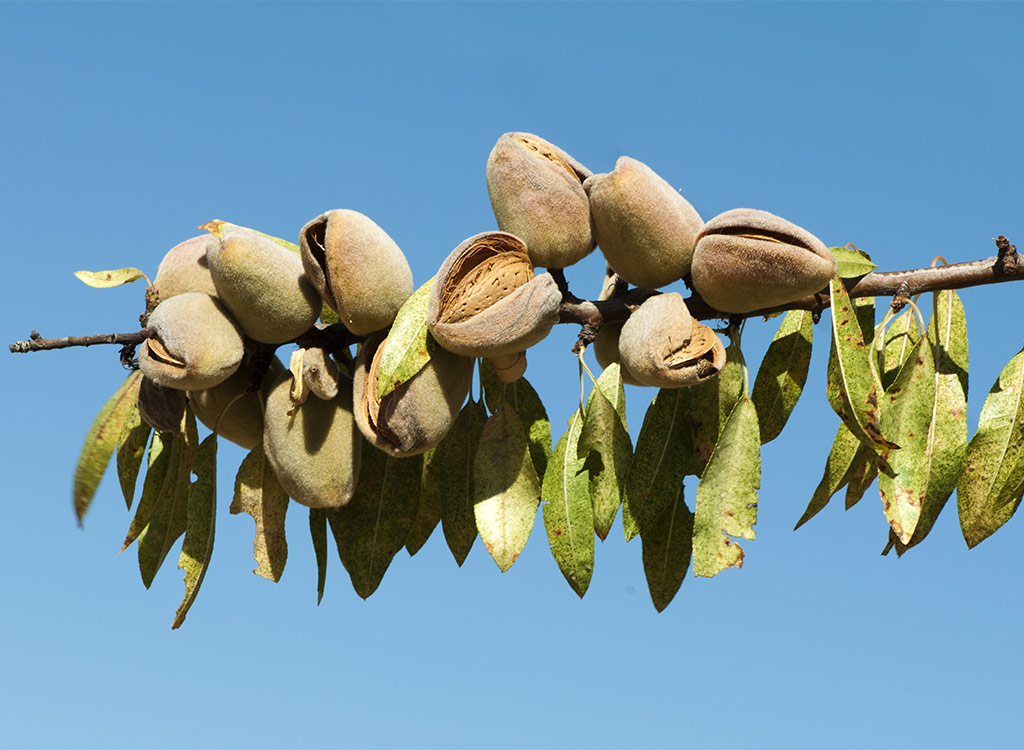
Almonds grow on trees with pretty white and pink flowers and are harvested when the hulls split and the shells become dry.
Broccoli
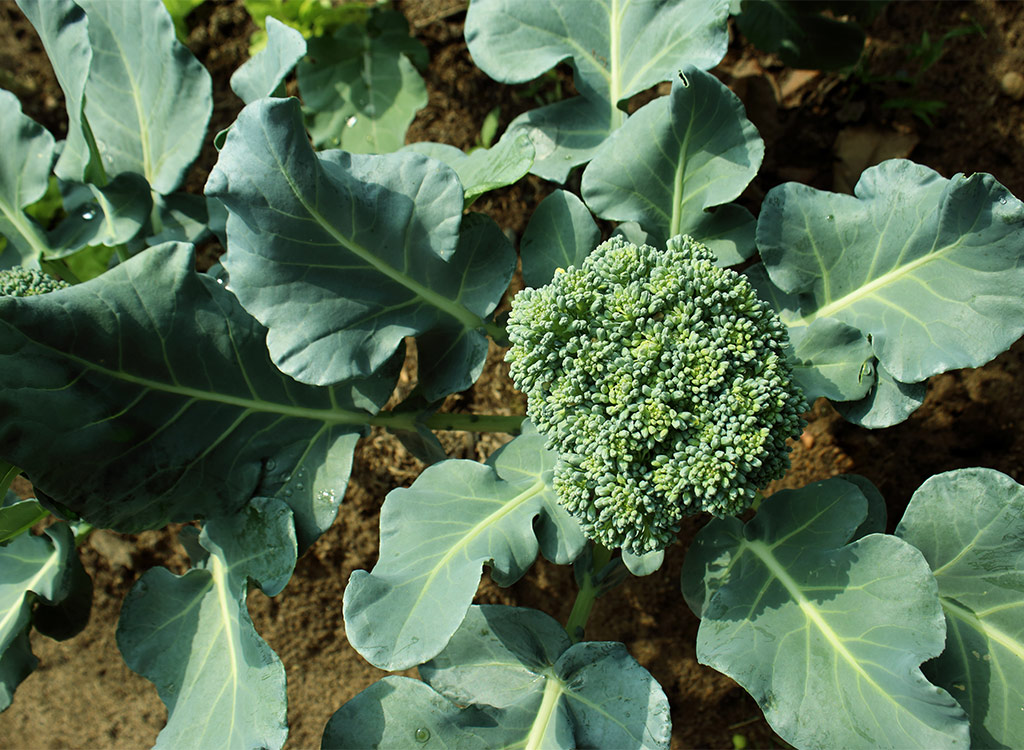
A member of the same family as the Brussel sprout, broccoli grows best in cool temperatures. Something cool about broccoli that most people don’t know is that the part that you eat is actually the plant’s flower.
Kiwi
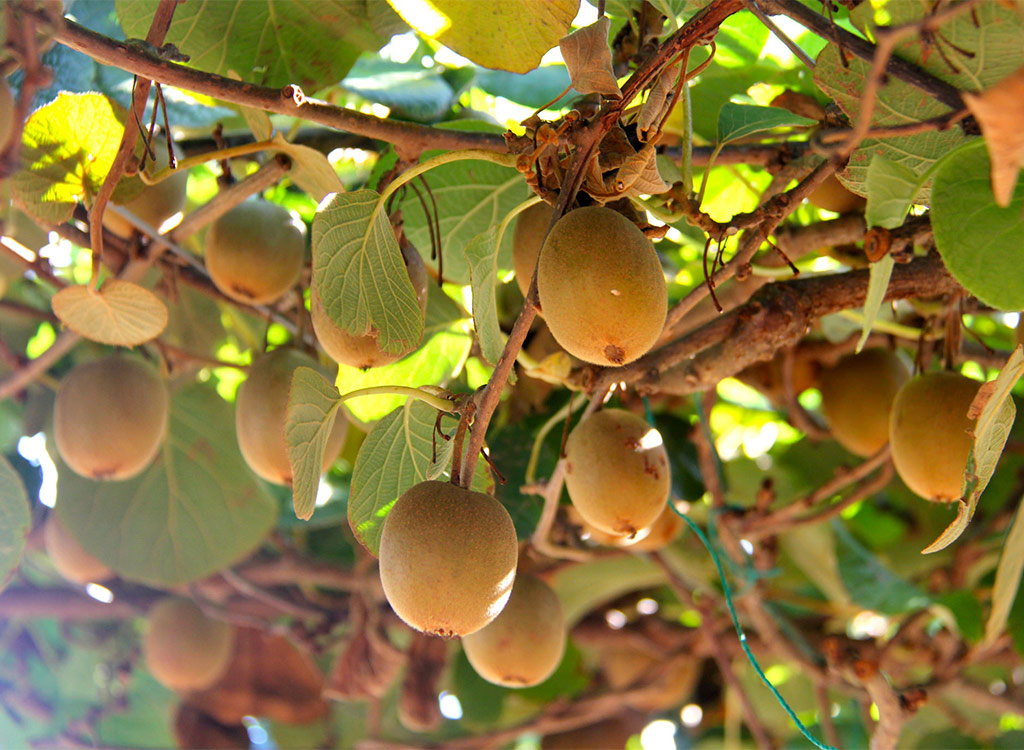
Kiwis grow similar to grapes, hanging low on their vines. Most people associate the growing of kiwi fruit with California, but really it is native to New Zealand, where the first commercial harvest occurred in the 1940s. Looking for more fun fact about food? Check out these 100 Mind-Blowing Facts About Food.
